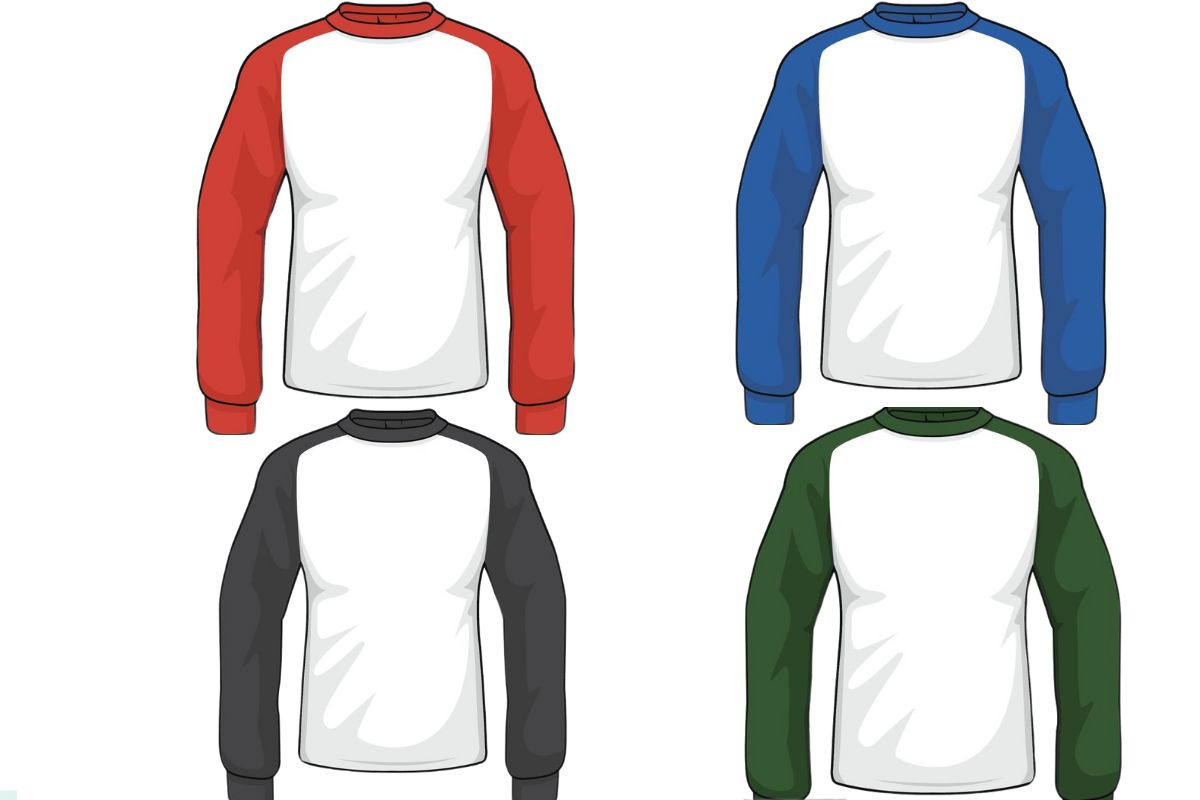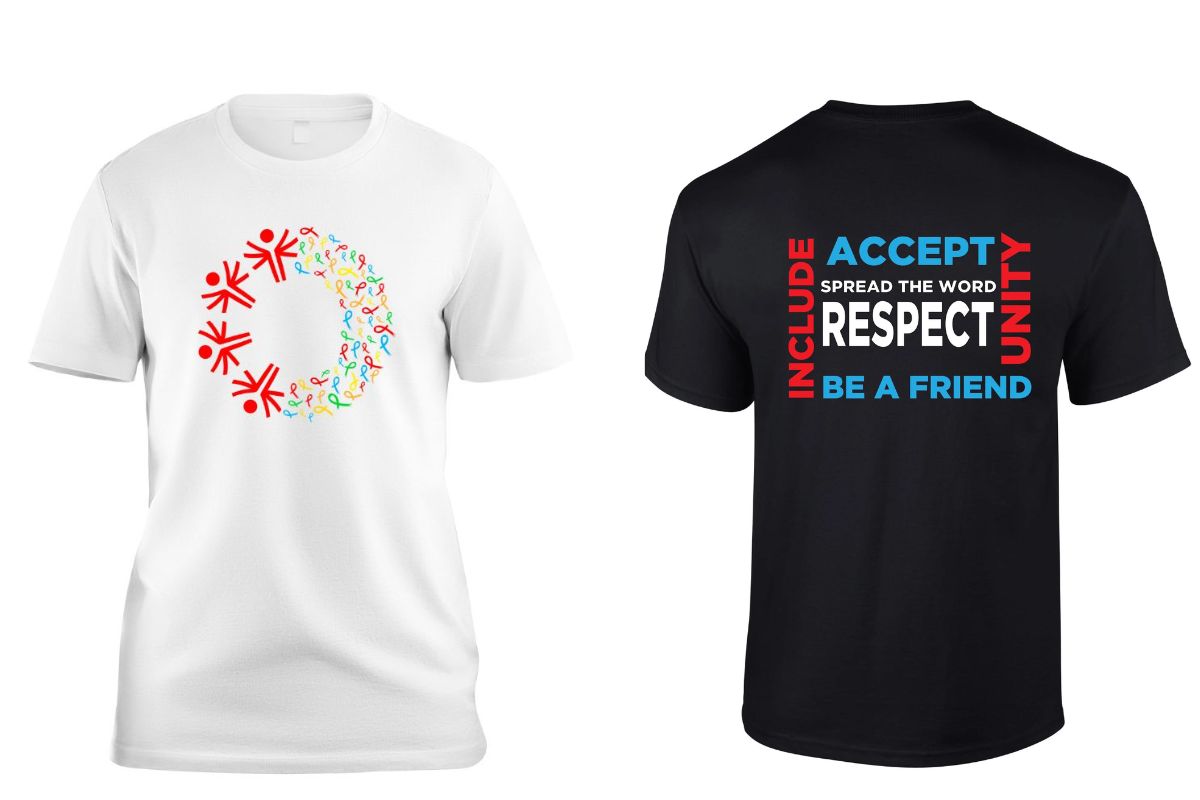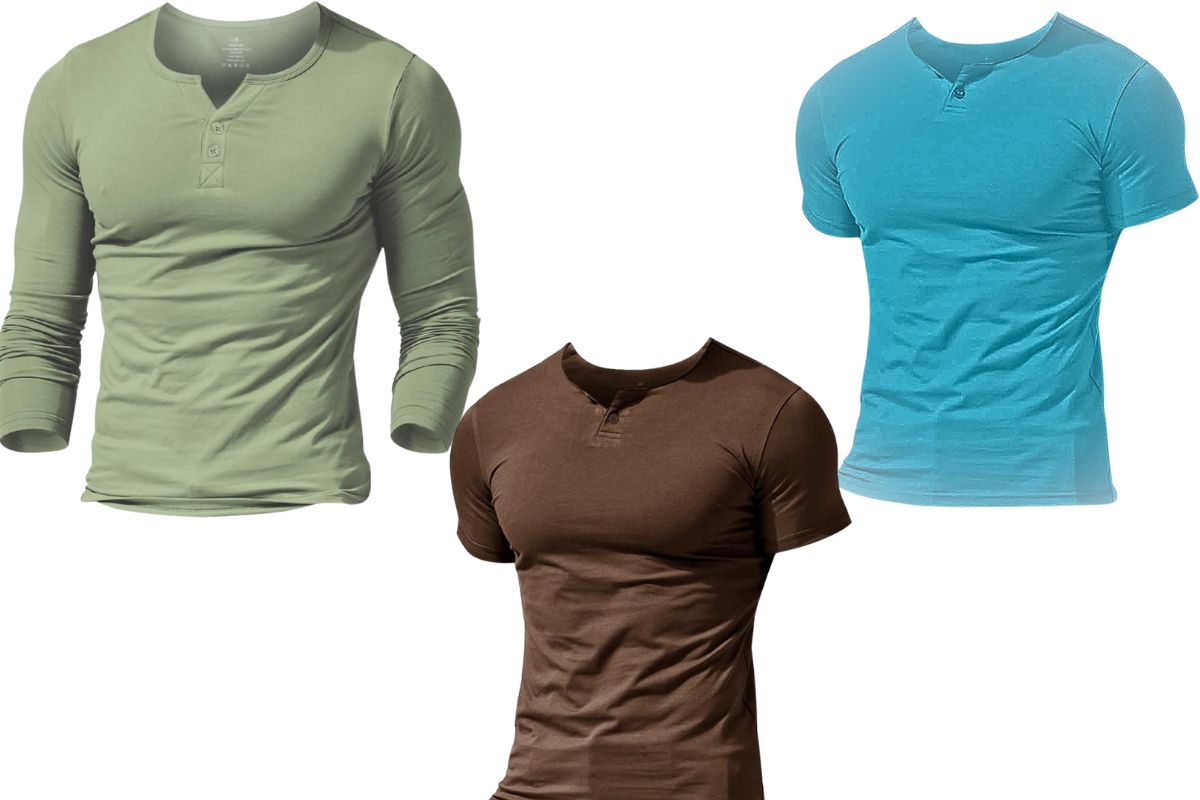A raglan t-shirt, often known as a raglan tee or baseball tee, features a distinctive sleeve style that sets it apart from other types of shirts. Unlike traditional t-shirts where the sleeve is attached at the shoulder, a raglan shirt has sleeves that extend in one piece fully to the collar. This creates a diagonal seam from the underarm to the neckline, providing not just a unique aesthetic, but also a comfortable fit. The raglan sleeve design promotes ease of movement, making it a popular choice for casual wear and sports attire alike.
Raglan t-shirts come in various sleeve lengths, ranging from full long sleeves to short and even cap sleeves. The versatility of the raglan sleeve allows for creative color blocking, often seen with contrasting colors between the sleeves and the body of the shirt. This is why the raglan tee has maintained its popularity over the years, as it blends functionality with a relaxed, sporty style. Its connection to baseball attire, where this style is heavily utilized, has contributed to the casual and athletic associations tied to the raglan silhouette.
History and Origin of the Raglan T-Shirt
You might find the raglan t-shirt in your wardrobe exudes casual style, but its origins are steeped in history. The raglan sleeve design is attributed to Lord Raglan, a notable figure from the early 19th century. Serving as a British Army officer, Lord Raglan made a name for himself during the Battle of Waterloo in 1815. The loss of his arm in battle led to the need for a modified garment that could comfortably fit his altered silhouette.
The raglan sleeve is a distinctive design where the sleeve extends in one piece up to the neckline, creating a diagonal seam from underarm to collarbone. This style offers you enhanced movement and comfort, qualities that Lord Raglan’s condition necessitated. The design also presents a raglan yoke appearance, differentiating it from traditional sleeves with a set-in seam.
- 19th Century: Origin of raglan design by Lord Raglan
- Battle of Waterloo: Influential event leading to the need for the raglan sleeve
- Raglan Sleeve: Characterized by a diagonal seam; named after Lord Raglan
Over time, the practicality of raglan sleeves transcended their initial purpose. The design has been adopted widely in sportswear, reflecting a relaxed fit and permitting dynamic movement. This has cemented the raglan t-shirt’s place both in the realm of sports and in everyday fashion, with its easygoing yet functional appeal.
Defining the Raglan T-Shirt
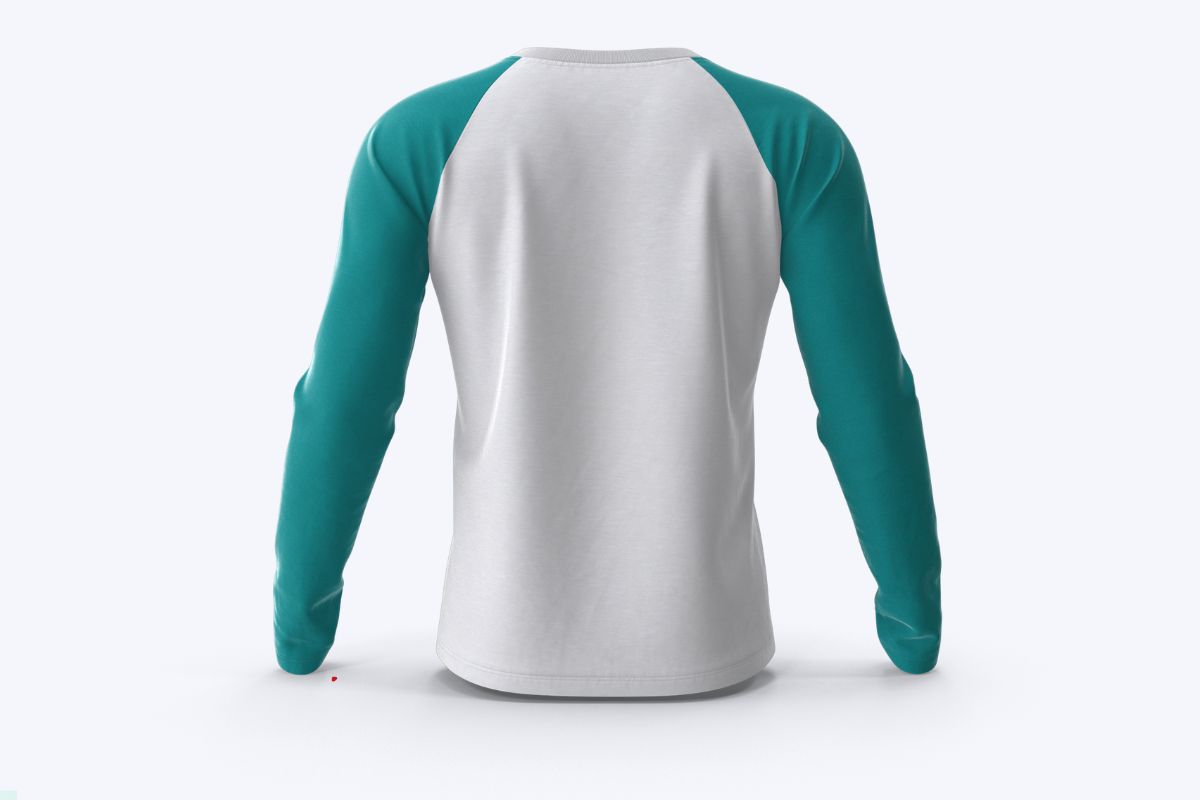
Raglan t-shirts are defined by their unique sleeve design, which extends in one piece to the collar, providing comfort and an athletic look.
Characteristics of Raglan Sleeves
Raglan sleeves are your go-to for a relaxed fit and distinct style. Characteristically, these sleeves are continuous, extending from the collar right down to the underarm, forming a diagonal seam. This seam contrasts with the main body, often highlighted by a different color fabric for a bold, sporty appearance. There are variations to the traditional raglan design, as follows:
- Semi-raglan: The sleeve seam starts at the neckline but doesn’t go all the way to the underarm.
- Zero raglan: There is no actual seam, but the design mimics the raglan aesthetic.
- Raglan gathered: Includes additional fabric gathered along the seam, giving the sleeve a puffed look.
Types of Raglan T-Shirts
Raglan t-shirts are versatile in terms of the length of their sleeves. You can find the following types that cater to different styles and preferences:
- Long sleeve: Sleeves extend to the wrists, suitable for cooler weather or full arm coverage.
- Three-quarter length: Sleeves end between the elbow and the wrist, offering a casual, classic look.
- Short-sleeve: Ideal for warm weather, providing more freedom of movement.
- Cap sleeve: A slight extension off the shoulder, often favored in women’s fashion.
Whether you’re assembling a casual outfit or gearing up for sports, raglan t-shirts offer you a wide range of styles to suit your needs.
The Raglan T-Shirt Design
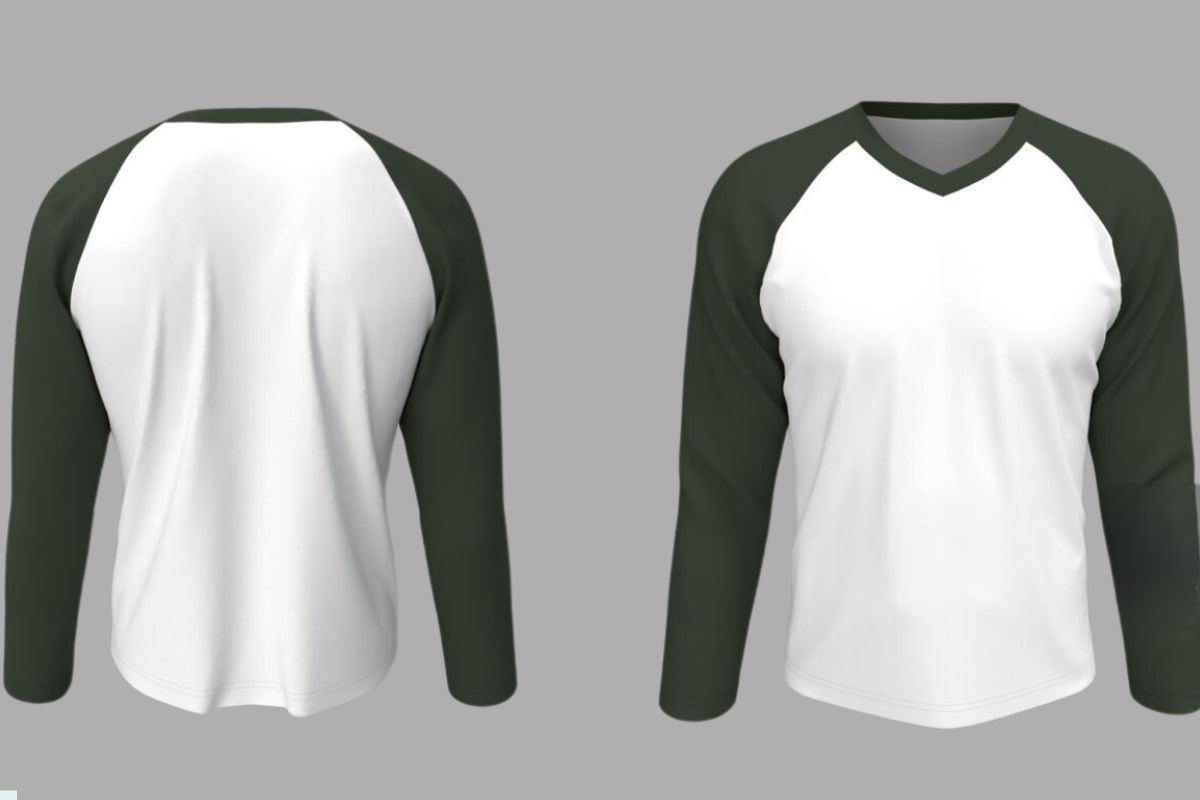
When you consider the raglan t-shirt design, you’re looking at a style that stands out for its construction, versatility in patterns and color, and the variety of collar options.
Sewing a Raglan T-Shirt
To sew a raglan t-shirt, you begin by attaching continuous sleeves to the body of the shirt with a diagonal seam from the underarm to the neckline. This differs from the set-in sleeves of standard t-shirts. Your aim is to achieve a seam that allows for a natural range of motion and a comfortable fit, particularly suitable for athletic wear.
- Align the sleeve piece to the bodice, right sides together.
- Stitch from the neckline to the underarm using a straight or zigzag stitch for stretch fabrics.
- Ensure the ‘taller’ side of the sleeve aligns with the front bodice for accurate assembly.
Color Blocking and Patterns
Color blocking is an integral design aspect of raglan t-shirts. You can easily distinguish the sleeves from the body of the shirt due to the natural separation created by the diagonal seam.
- Sleeves often feature a different color or pattern than the body, lending a dynamic and sporty appearance.
- Utilize the design to emphasize team colors or to make a fashion statement.
Collar and Neckline Variations
Raglan t-shirts offer diverse collar and neckline options:
- Crew Neck: The most common, offering a close-fitting, round neckline.
- V-Neck: Creates a sharper and arguably more modern look, with a V-shaped neckline.
- Scoop Neck: Features a deeper, curved neckline for a more relaxed style.
Your choice of neckline can transform the garment from casual to athletic wear, ensuring that the raglan t-shirt is adaptable to various styles and occasions. Each variation provides different levels of coverage and aesthetic appeal, accommodating personalized comfort and design preferences.
Material and Fabrication
| Material | Description | Pros | Cons |
|---|---|---|---|
| Cotton | Soft, breathable, and absorbent fabric, offering comfort for everyday wear. | Durable, easy to care for, and available in various weights and textures. | May shrink or fade over time, depending on quality and care. |
| Polyester | Synthetic fabric known for its durability and moisture-wicking properties. | Wrinkle-resistant, quick-drying, and retains color well. | Less breathable compared to natural fibers, may cause sweating. |
| Rayon | Semi-synthetic fabric with a soft and smooth texture, often blended with other fibers for added comfort. | Drapes well, lightweight, and offers a luxurious feel. | Prone to wrinkling and may require special care during washing. |
| Tri-Blend | Combination of cotton, polyester, and rayon, offering the benefits of each material. | Soft and comfortable, retains shape well, and has added stretch for mobility. | Can be more expensive compared to single-material shirts. |
| Bamboo | Eco-friendly fabric made from bamboo fibers, known for its softness and breathability. | Naturally antibacterial, moisture-wicking, and hypoallergenic. | Limited availability and higher price point compared to other materials. |
| Organic Cotton | Grown without the use of synthetic pesticides or fertilizers, environmentally friendly. | Sustainable, free from harmful chemicals, and offers superior breathability. | Limited availability and may have a higher price point. |
When selecting a raglan t-shirt, the type of fabric and its construction method are crucial for comfort, durability, and fit. These elements determine how the garment will feel against your skin and accommodate movement.
Choosing the Right Fabric
When it comes to fabric choices for your raglan t-shirt, cotton is a popular option due to its softness and breathability. However, blends like cotton-polyester offer more durability and may resist shrinking. For a sportier look and feel, consider moisture-wicking materials that keep you dry. The table below outlines some common fabric types and their properties:
| Fabric Type | Properties |
| 100% Cotton | Soft, breathable, natural |
| Cotton-Polyester Blend | Durable, less prone to shrinking, quick-drying |
| Athletic Knits | Moisture-wicking, lightweight, stretchable |
The Importance of Fabric Stretch
A knit fabric generally offers more stretch, accommodating the broader range of motion a raglan sleeve provides. When sewing a raglan t-shirt, using a stretch stitch or a serger can ensure the seams stretch with the fabric, preserving the integrity of the garment during movement. This is particularly relevant when playing sports or engaging in active pursuits. Henleys, a style of shirt that often features a raglan cut, benefit greatly from this stretch for both comfort and function.
Fit and Comfort
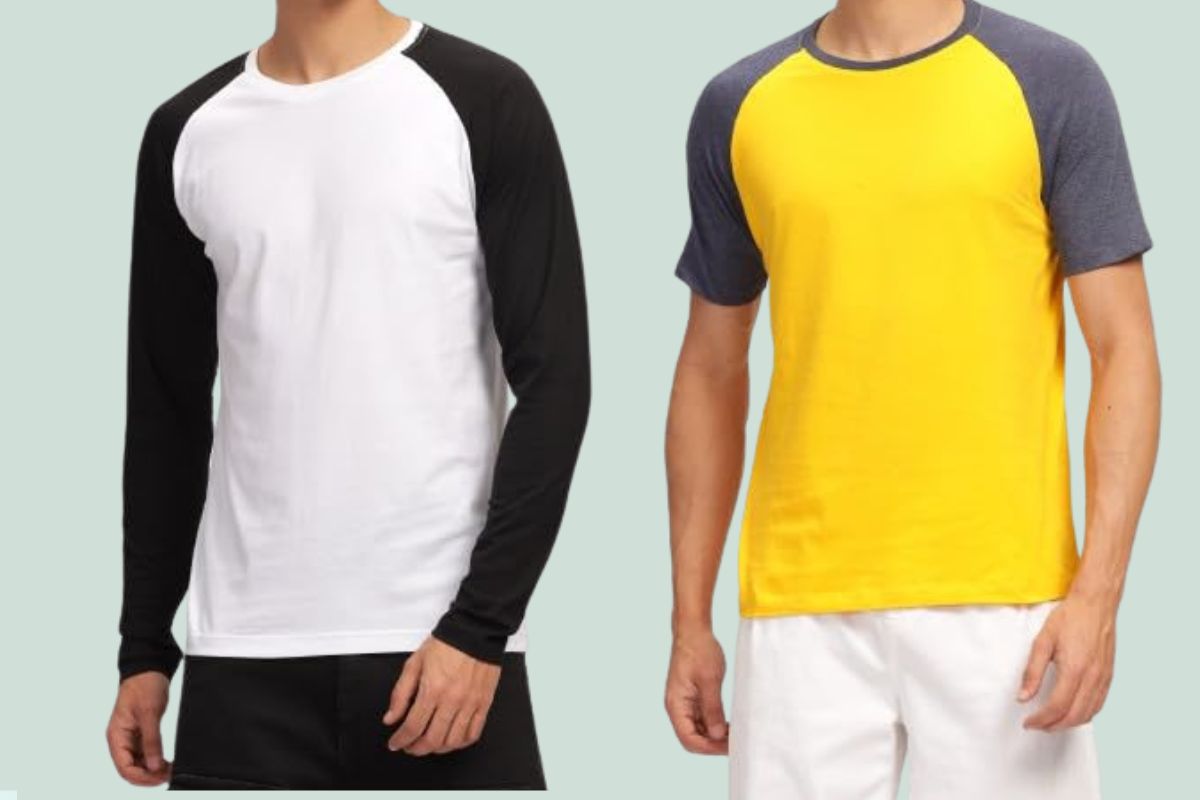
When selecting a raglan t-shirt, consider how its unique construction influences your range of motion and the overall fit. A well-chosen raglan tee can provide both a flattering silhouette and exceptional comfort.
Range of Motion and Comfort
Raglan sleeves are designed to offer increased freedom of movement. Unlike traditional t-shirt sleeves, which are set around the shoulder, raglan sleeves extend in one piece fully to the collar of the tee. This construction allows for a more casual look, thanks to the looser fit around the shoulders and chest.
- Advantages:
- Enhanced shoulder and arm mobility
- Aesthetic appeal with distinctive shoulder seams
The Underarm Fit
The underarm area of a raglan t-shirt is of particular importance as it directly affects your comfort level. The seam’s positioning, running from the underarm to the neckline, often provides a relaxed fit that’s less restrictive than traditional seams.
- Considerations:
- Seek a snug yet comfortable underarm fit
- Avoid overly loose fits to maintain a flattering fit
Finding the Perfect Size
Finding the right size of a raglan t-shirt will help you strike a balance between style and comfort. Be mindful of how the tee fits through the chest and shoulder area:
| Fit Type | Chest and Shoulder Fit | Suitability |
| Slim Fit | Closer to the body | Favors an athletic body type |
| Relaxed Fit | Roomier and looser | Accommodates all body types |
- Tips:
- Measure yourself to compare with size charts
- Consider the fabric’s stretchability for optimal underarm fit
Customizing Your Raglan T-Shirt
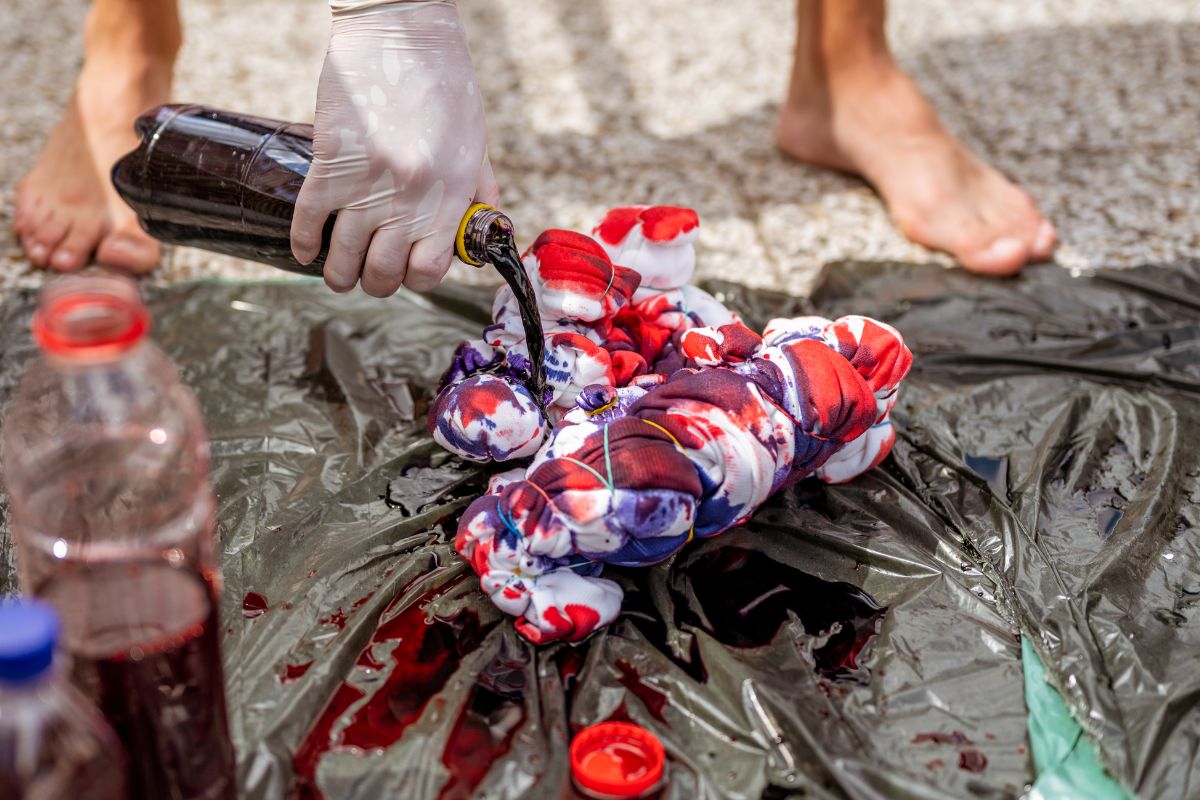
Customizing your raglan T-shirt is a rewarding project that allows you to express your personal style. Whether you’re adding your own design flair with patterns or branding the tee with logos, understanding the process and required supplies is key.
Creating a Personal Pattern
To tailor a raglan T-shirt to your exact preferences, begin by drafting a personal pattern. Supplies you’ll need include:
- Pattern paper
- A well-fitting raglan T-shirt (as a reference)
- A ruler for precise measurements
- Pencils and erasers
- Scissors for cutting the pattern
First, lay your reference T-shirt on the pattern paper and trace its outline, making sure to capture the distinctive diagonal sleeve seam of the raglan style. Adjust the traced pattern using your ruler to ensure straight lines and correct angles. A tutorial on raglan T-shirt patterns can guide you through the intricacies of custom fitting and style alterations.
Adding Logos and Embellishments
To distinguish your raglan T-shirt further:
- Choose the location for your logo or design.
- Decide on the application method: screen printing, embroidery, or iron-on transfers are popular choices.
- Gather the necessary materials, such as inks, patches, or heat-transfer paper.
For logos, careful placement is critical. Consider the visibility and aesthetic balance; common areas for logo placement include the chest, back, or sleeves. Employ a test fabric to practice the application of your design before committing to the final product. This ensures a polished, professional look upon completion.
Styling with Raglan T-Shirts
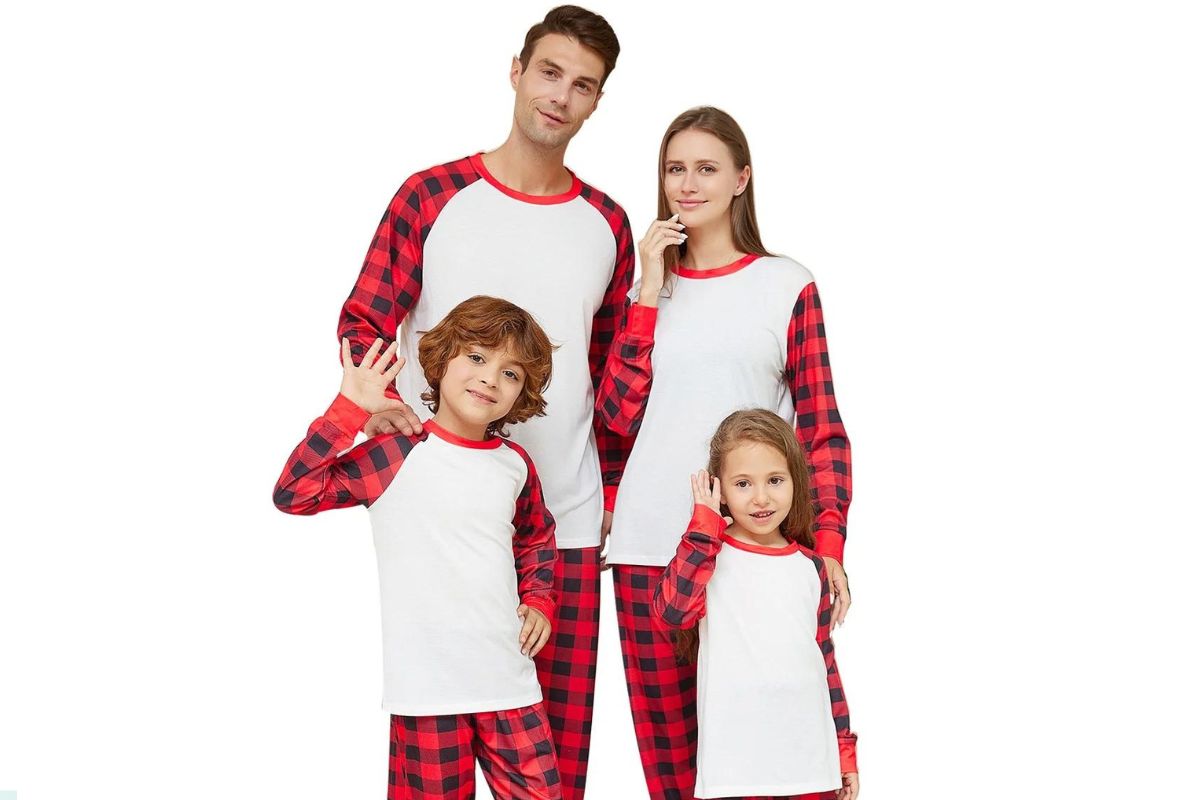
Raglan t-shirts provide a versatile base for a multitude of looks. With their distinctive sleeve style and comfort, you can create outfits ranging from casual, sporty to more refined ensembles.
Casual and Sporty Looks
For a casual and sporty vibe, opt for a classic baseball raglan t-shirt paired with joggers or denim shorts. Your raglan can act as a standalone piece, showcasing its contrasting sleeve color, which is often associated with classic sports uniforms. Finish off the look with sneakers for a true athletic feel.
Layering Techniques
When it comes to layering, raglan t-shirts are exceptionally accommodating. You can layer them under a leather jacket or an open button-down shirt for added depth and texture. In cooler weather, don a raglan tee under a sweater for a peek of the color-blocked sleeves. This technique not only adds warmth but also introduces an interesting visual element to your outfit.
Matching with Pants and Skirts
Raglan shirts pair well with a variety of bottoms. For a casual look, combine your t-shirt with jeans or casual trousers. Skirts can also complement raglan tees, especially when aiming for a relaxed yet feminine style. Here’s a simple guide on pairing your raglan tee:
- Jeans: Any wash works well; skinny or boyfriend styles maintain a casual feel.
- Casual Trousers: Chinos or cargo pants offer a utilitarian aesthetic.
- Skirts: Pair with an A-line or pencil skirt for a balanced silhouette.
The key when styling raglan t-shirts is to play with contrasts and comfort, ensuring your ensemble is as practical as it is stylish.
Maintenance and Care of Raglan T-Shirts

Maintaining your raglan T-shirts properly ensures they keep their comfort and style. Here are specific tips on washing and drying as well as how to preserve the fabric’s integrity for lasting wear.
Washing and Drying Tips
Begin by always checking the care label on your raglan T-shirt for specific instructions. Most raglan shirts are made from cotton or a cotton blend and are machine washable. Use a gentle cycle with cold water to prevent shrinkage and color bleeding—hot water can compromise the knit fabric’s structure and cause fading.
- Turn your raglan T-shirt inside out before washing. This helps reduce friction against the print or fabric during the washing cycle.
- Group similar colors together to avoid dye transfer.
- Use a mild detergent; harsh chemicals can break down the fibers more quickly.
- To dry, lay the shirt flat or hang it up to maintain its shape and prevent stretching. If you must use a dryer, choose a low heat setting to keep the fabric’s momentum, meaning its natural drape and movement.
Longevity and Preservation
To ensure the longevity of your raglan T-shirts, it’s important to handle the knit fabric with care and prevent it from excessive wear.
- Avoid overwashing; washing only when necessary will reduce fabric wear.
- Iron on a low heat setting if needed, and avoid direct contact with any printed areas.
- Store properly, which means folding and placing in a drawer to avoid hanger marks, or hanging on appropriate hangers that will not stretch the fabric.
- Consider using fabric conditioner from time to time to keep the fibers soft and prevent them from becoming brittle.
By following these maintenance tips, your raglan T-shirts will remain a comfortable and vibrant part of your wardrobe, maintaining their fit and color through many wears.
Frequently Asked Questions
When considering a raglan t-shirt, you may have specific queries about its distinctive features and benefits. This section aims to address those common questions with clear and precise information.
What distinguishes a raglan t-shirt from other types of t-shirts?
A raglan t-shirt is recognizable by its sleeves, which extend in one piece fully to the collar, resulting in a diagonal seam from underarm to neckline. This differs from the traditional t-shirt, where sleeves are usually attached at the shoulder.
What materials are commonly used in the manufacturing of raglan t-shirts?
Raglan t-shirts are often made from a variety of materials, including cotton, polyester, and blends thereof. These fabrics provide the necessary stretch and comfort that this athletic style of t-shirt is known for.
How does the fit of a raglan t-shirt differ from traditional t-shirt styles?
The fit of a raglan t-shirt tends to be more relaxed and less restrictive, particularly around the shoulders and underarms, which enhances mobility. This is a direct result of the sleeve design that is sewn from the underarm to the collar.
What design elements are characteristic of a women’s raglan t-shirt?
Women’s raglan t-shirts may feature tailored fits, scoop necklines, and variations in sleeve lengths, including three-quarter and cap sleeves. The design often lends itself to color-blocking, with sleeves contrasting the body of the shirt.
Why are raglan shirts often chosen for athletic wear?
The raglan shirt is a staple in athletic wear due to its comfortable fit that allows for a great range of motion. The diagonal seam of the sleeve does not constrain movement, making it ideal for sports and physical activities.
What makes the raglan sleeve unique from a construction perspective?
From a construction standpoint, the raglan sleeve is not set into a traditional armhole; rather it is connected via a continuous piece of fabric that extends from the underarm to the collar. This design eliminates the shoulder seam altogether, providing a distinctive look and comfort.

